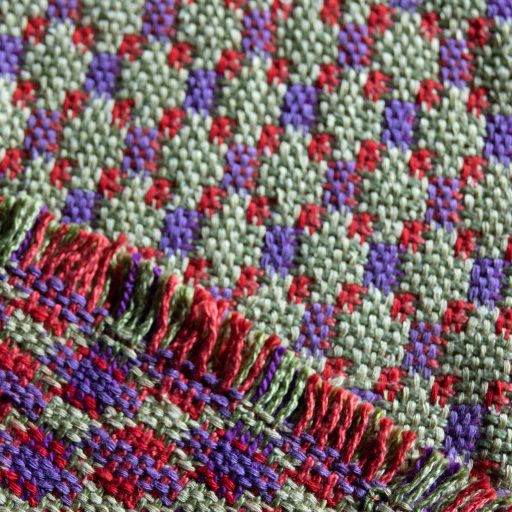For some time readers have asked about my weaving, so as I am pretty much housebound these days, this seems a good time to write about it and weaving in general. Let’s begin with some background that I hope you find interesting .
 Did you know that that the only surviving being that has been weaving longer than man is a spider? History suggests that man discovered early on that lacing reeds, grasses and twigs together provided items such as clothing, shelter, vessels and sleep mats that made life more comfortable. So it is that weaving is said to have preceded other skills such as pottery making, metalsmithing or glass blowing he/she eventually developed. Knowing something of the history of weaving makes me very proud to continue this ages old tradition.
Did you know that that the only surviving being that has been weaving longer than man is a spider? History suggests that man discovered early on that lacing reeds, grasses and twigs together provided items such as clothing, shelter, vessels and sleep mats that made life more comfortable. So it is that weaving is said to have preceded other skills such as pottery making, metalsmithing or glass blowing he/she eventually developed. Knowing something of the history of weaving makes me very proud to continue this ages old tradition.
 As time passed, weaving became not just practical but an art form. Skilled weavers were held in high regard among royalty who frequently appointed them to court positions. Here, weavers created beautiful tapestries that were used for decorative purposes as well as taken to battle where they made encampments more like home. Often tapestries were prized spoils of war. Thankfully, many survived various ransacks and have been preserved so that we might enjoy and marvel at the work done by hand in another time.
As time passed, weaving became not just practical but an art form. Skilled weavers were held in high regard among royalty who frequently appointed them to court positions. Here, weavers created beautiful tapestries that were used for decorative purposes as well as taken to battle where they made encampments more like home. Often tapestries were prized spoils of war. Thankfully, many survived various ransacks and have been preserved so that we might enjoy and marvel at the work done by hand in another time.
Now, here’s a little tidbit that may be fact or fiction. Christopher Columbus’s father was one of those court appointed weavers. As a youngster, Columbus was an apprentice, and it is thought that his dislike of weaving resulted in his going to sea. The rest is history!

While weaving is a respected tradition in other cultures and patterns are passed from one generation to another, in America it is less so.  Early on in this country, hand loomed fabrics were for clothing and bed linens made of wool and cotton spun and dyed by the weaver.
Early on in this country, hand loomed fabrics were for clothing and bed linens made of wool and cotton spun and dyed by the weaver.
 Slaveholders often had an outlying shed where women and children spent their days weaving fabric for necessities.
Slaveholders often had an outlying shed where women and children spent their days weaving fabric for necessities.
Today, much of what was once handwoven is produced by machinery which contributes to the scarcity of weaving in developed countries. However, language is peppered with references to weaving. We speak of the tapestry/fabric of life, the threads that bind and tales/lives woven together. A woman who spun yarn and remained unmarried became known as a spinster. On an on it goes, but I’ll leave it at that today and come back later with a fascinating look at looms.
i so appreciate your visit and the comments you leave behind
Joining

You make my day with your comments